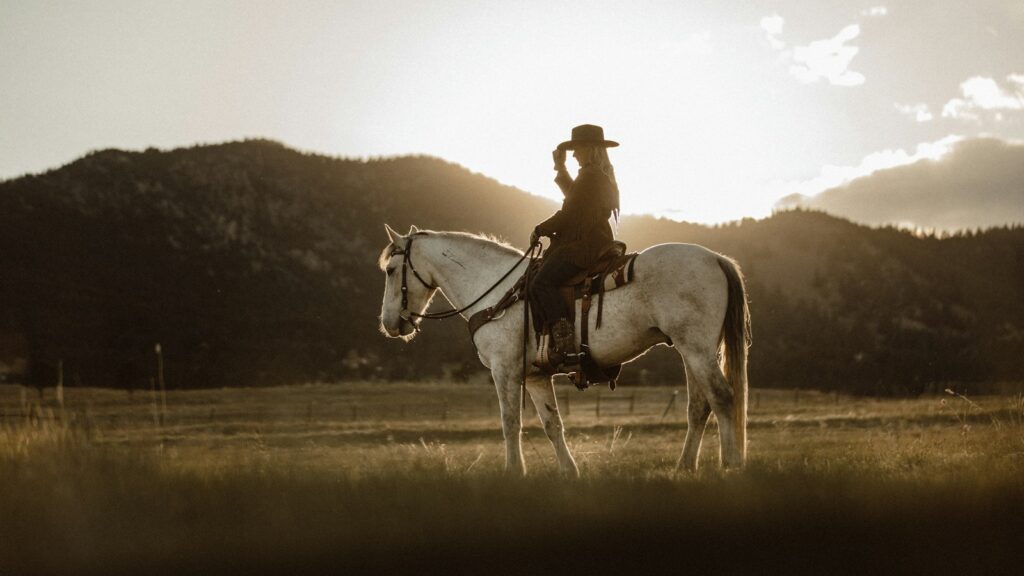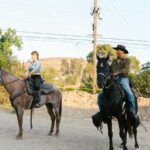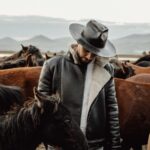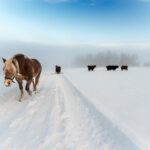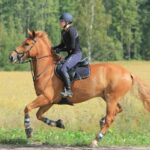With their thundering hooves, flowing manes, and their unwavering loyalty to their cowboys, horses were as much the stars of classic Western films as the actors who rode them. These majestic equine performers galloped through dangerous terrain, performed impressive stunts, and often developed genuine bonds with their human counterparts. While human actors like John Wayne, Clint Eastwood, and Gary Cooper received top billing, their trusty steeds became cultural icons in their own right, often achieving celebrity status among moviegoers. These four-legged stars weren’t just props but essential characters that helped define the Western genre and capture the spirit of the American frontier. From the 1930s through the 1970s, these magnificent animals became household names, with fan clubs, merchandise, and public appearances that rivaled those of their two-legged co-stars.
Trigger: Roy Rogers’ Golden Palomino
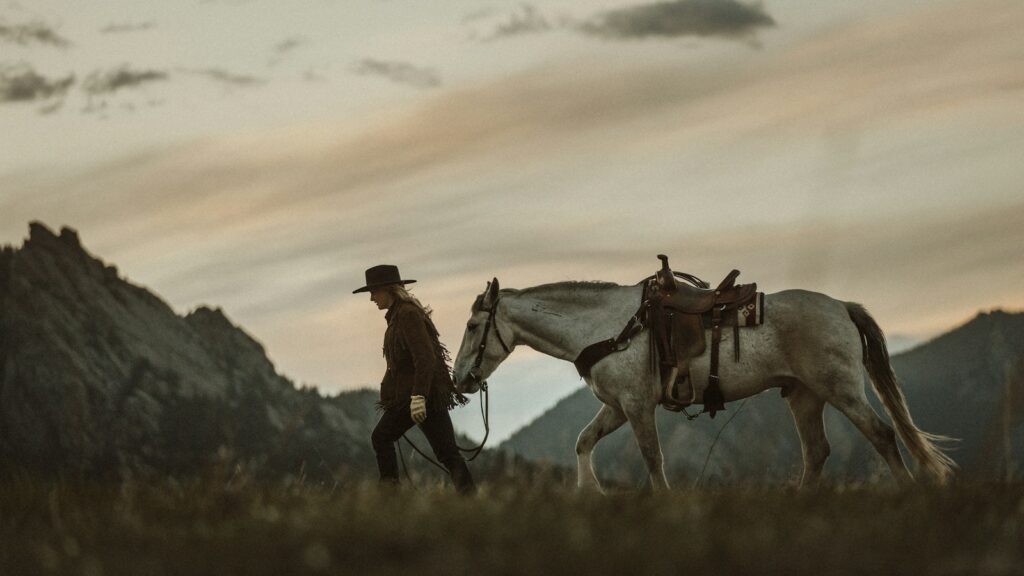
Perhaps the most famous horse in Western film history, Trigger was a stunning golden Palomino with a flowing white mane who became inseparable from his owner, “King of the Cowboys” Roy Rogers. Purchased by Rogers in 1938 for $2,500 (a substantial sum at the time), Trigger appeared in all 88 of Rogers’ films and 100+ television episodes. Known for his intelligence, Trigger mastered over 150 tricks including counting, sitting like a dog, untying knots, and even signing his “autograph” with a hoof print. The bond between Rogers and Trigger was legendary, with the cowboy star refusing to let anyone else ride his beloved horse. After Trigger’s death in 1965 at age 33, Rogers was so devoted to his equine partner that he had the horse preserved through taxidermy, demonstrating the extraordinary connection that transcended typical human-animal relationships.
Silver: The Lone Ranger’s Striking White Stallion
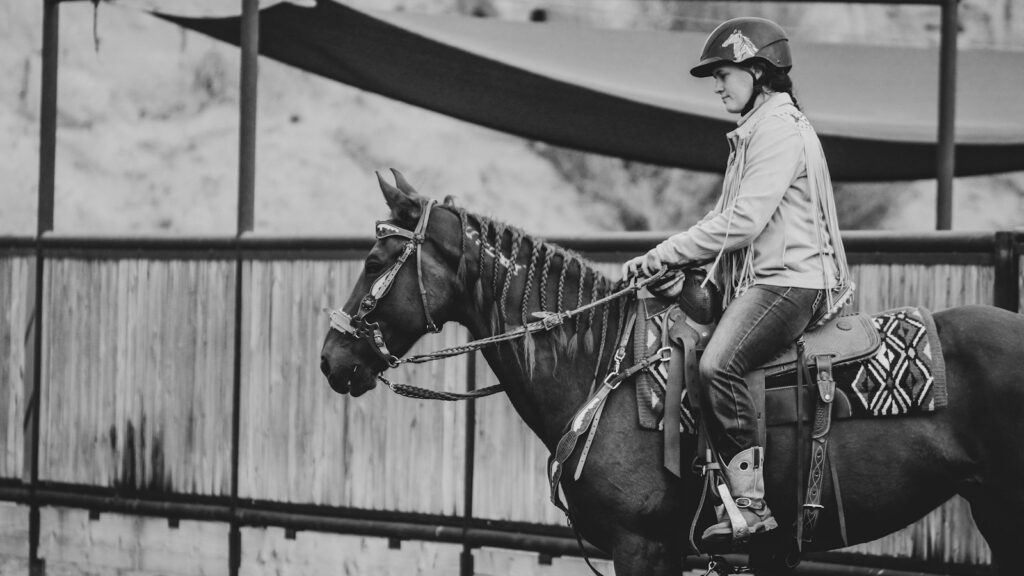
Hi-yo, Silver! Away! This famous call heralded the arrival of the Lone Ranger atop his magnificent white stallion, Silver. First introduced on radio in 1933, Silver galloped onto television screens in 1949 when the “The Lone Ranger” series premiered, starring Clayton Moore and his trusty horse. According to the show’s mythology, the Lone Ranger saved the wild white stallion from an enraged buffalo and, in return, Silver became his loyal companion. Several horses played Silver throughout the television series and films, all trained to perform impressive rearing poses on command. The “William Tell Overture” often accompanied Silver’s dramatic entrances, creating one of the most recognizable horse-and-rider combinations in entertainment history. Silver’s pure white coat symbolized justice and morality, visually reinforcing the Lone Ranger’s commitment to righteousness in the Wild West.
Topper: Hopalong Cassidy’s White Charger
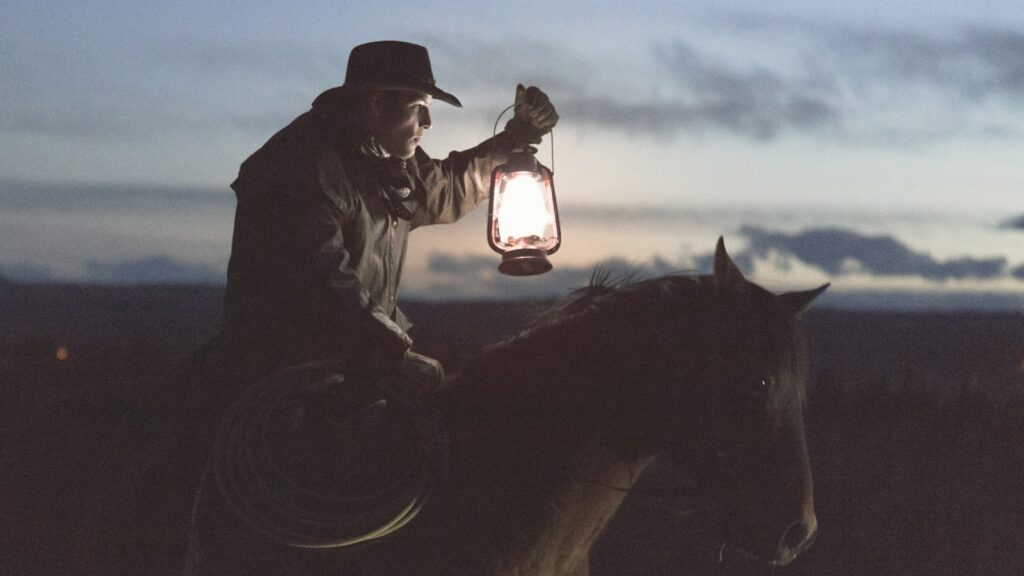
William Boyd’s character Hopalong Cassidy broke Western conventions with his all-black attire, which contrasted dramatically with his pure white horse, Topper. Appearing in 66 films and later in the popular television series, Topper became as recognizable as his rider, helping transform Hopalong Cassidy into one of the first multimedia Western franchises. Unlike many Western horses who performed elaborate tricks, Topper was primarily valued for his striking appearance and steady temperament during filming. Boyd became so attached to his equine co-star that he purchased Topper and kept him even after retiring from acting. Topper lived to the impressive age of 27, spending his retirement years on Boyd’s property where fans would often visit the famous horse. The black-and-white visual pairing of Cassidy and Topper created an iconic image that appeared on countless lunch boxes, toys, and merchandise throughout the 1950s.
Champion: Gene Autry’s Wonder Horse
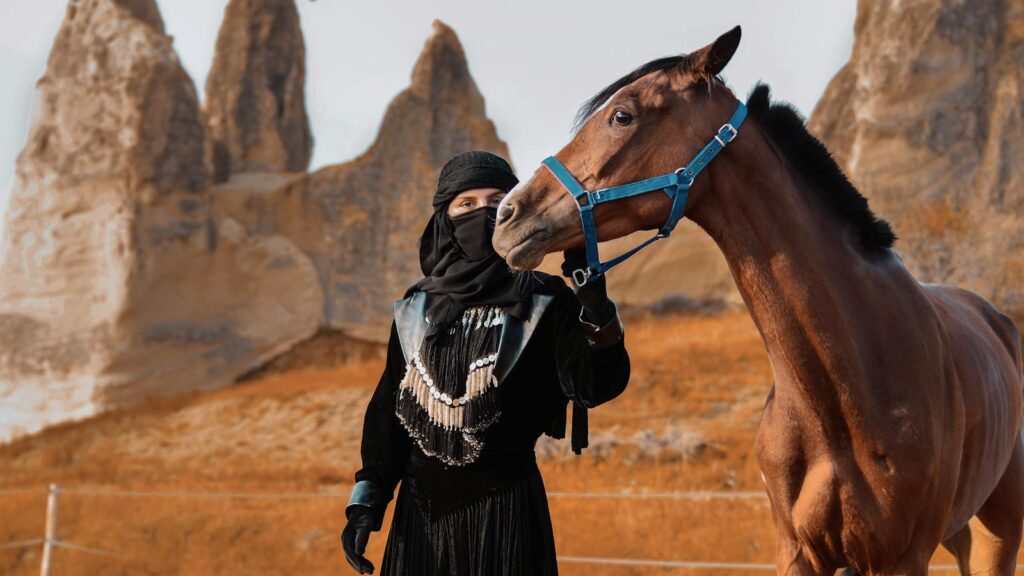
Gene Autry, the “Singing Cowboy,” found his perfect equine partner in Champion, a beautiful sorrel (chestnut) horse who appeared alongside Autry in numerous films and television shows from the late 1930s through the 1950s. In fact, several horses portrayed “Champion” throughout Autry’s career, with the original being purchased from Tom Mix, another famous Western star. Champion performed impressive stunts, including diving into the water from platforms, a rarity among equine performers. The horse received billing nearly equal to Autry’s in many productions, even starring in his own 26-episode television series, “The Adventures of Champion,” which aired from 1955 to 1956. Autry’s famous song “Back in the Saddle Again” was often played as he rode Champion, creating an inseparable association between the cowboy, his horse, and his music. Champion’s popularity was so immense that he had his own comic book series and received thousands of fan letters addressed directly to the horse.
Buttermilk: Dale Evans’ Dependable Quarter Horse
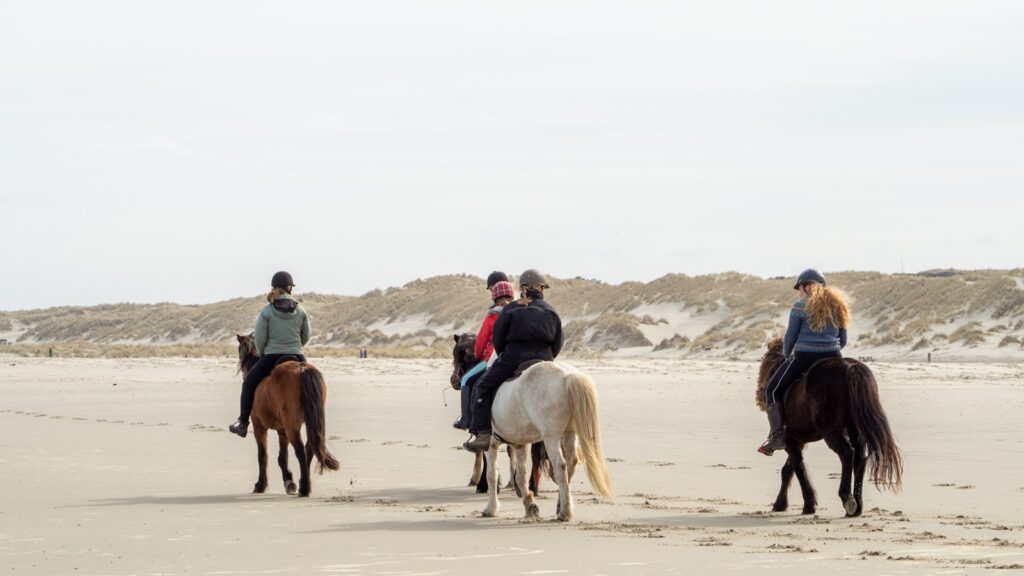
While the male cowboys often had the flashiest horses, Dale Evans’ buckskin Quarter Horse, Buttermilk, became equally beloved to Western film audiences. As the trusted mount of “Queen of the West” Dale Evans (wife and co-star to Roy Rogers), Buttermilk appeared in numerous films and throughout the “Roy Rogers Show” television series. The golden-colored horse with a black mane and tail provided a perfect complement to Trigger’s palomino coloring when the two horses appeared on screen together. Buttermilk was known for his even temperament and reliability, making him ideal for television work where multiple takes and unpredictable circumstances required a steady equine performer. Evans formed a deep bond with Buttermilk during their years working together, often crediting the horse with keeping her safe during difficult riding scenes. In public appearances with Rogers and Trigger, Evans and Buttermilk drew equally enthusiastic responses from fans who recognized the horse immediately.
Diablo: The Black Stallion from “Zorro”
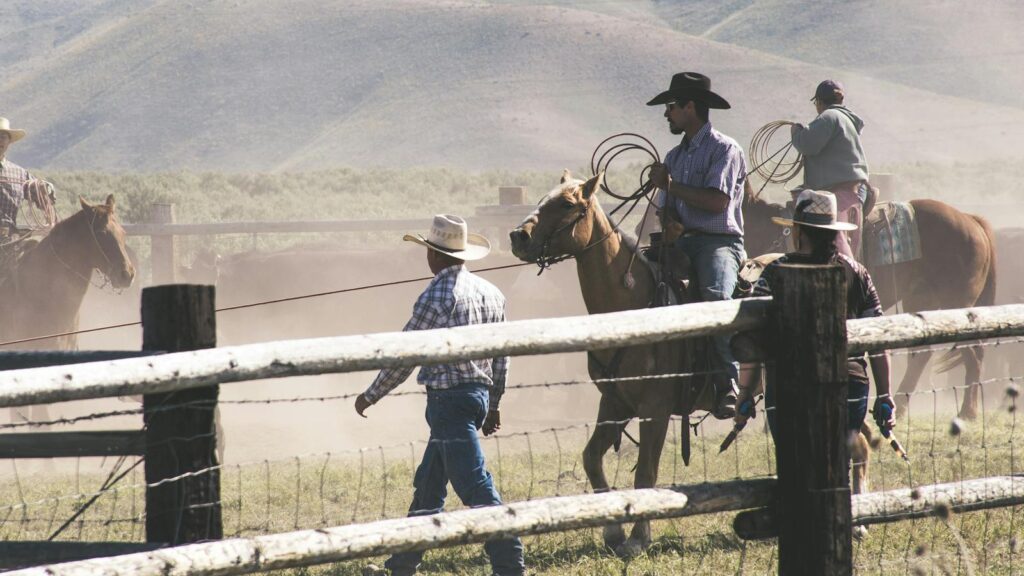
When Disney’s “Zorro” television series premiered in 1957, Guy Williams’ masked hero rode a magnificent coal-black Andalusian stallion named Tornado (though called Diablo behind the scenes). The powerful horse complemented Zorro’s mysterious persona, with both the character and mount dressed entirely in black. Diablo was trained to perform several impressive maneuvers, including responding to whistle commands and standing completely still during sword-fighting sequences. The horse’s most famous trick was rearing dramatically on command, creating the silhouette that became emblematic of the Zorro character. Unlike many Western horses who perform primarily outdoors, Diablo needed to be comfortable working in sound stages with artificial lighting, cameras, and the confined spaces of indoor sets. The dramatic contrast of the black horse against the adobe walls of Spanish California created a striking visual signature that helped define the series’ distinctive look.
Tony: Tom Mix’s Intelligent Wonder Horse
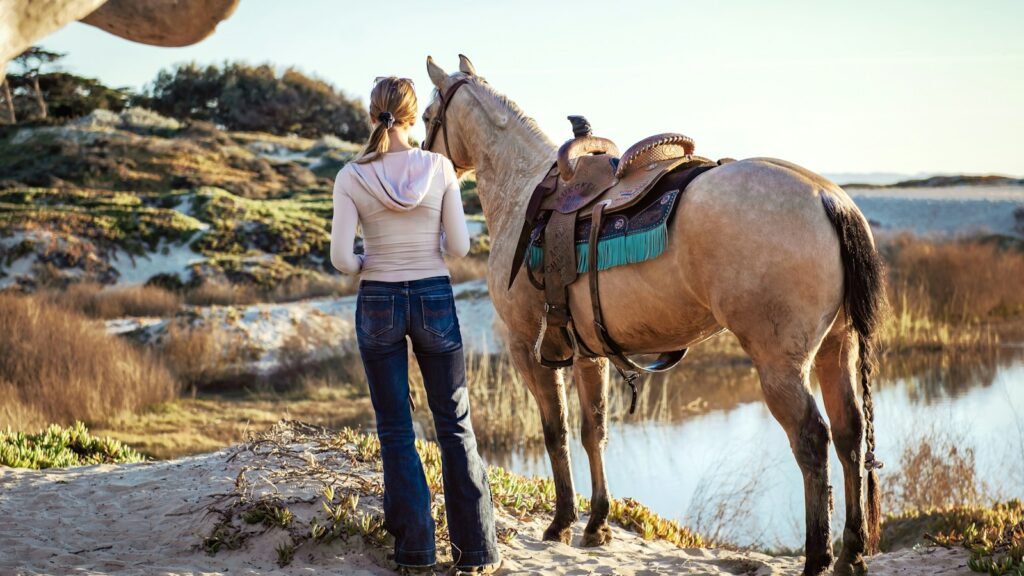
Before there was Trigger or Silver, there was Tony, the “Wonder Horse” belonging to silent film Western star Tom Mix. This beautiful brown and white pinto became one of the first equine movie stars during the 1920s and early 1930s. Tony performed remarkable feats including untying knots, opening doors, and even rescuing Mix from dangerous situations in their films together. The horse was so popular that he received his own screen credit in films and even had his hoof prints immortalized in cement at Grauman’s Chinese Theatre in Hollywood alongside Mix’s handprints in 1927. Mix insured Tony for the then-astronomical sum of $150,000, reflecting both the horse’s financial value to his films and his personal attachment to his four-legged partner. After appearing in over 180 films, Tony retired in 1932 but continued to make public appearances with Mix until the horse’s death in 1942, demonstrating the enduring appeal of this pioneering equine performer.
Fritz: William S. Hart’s Pinto Pony
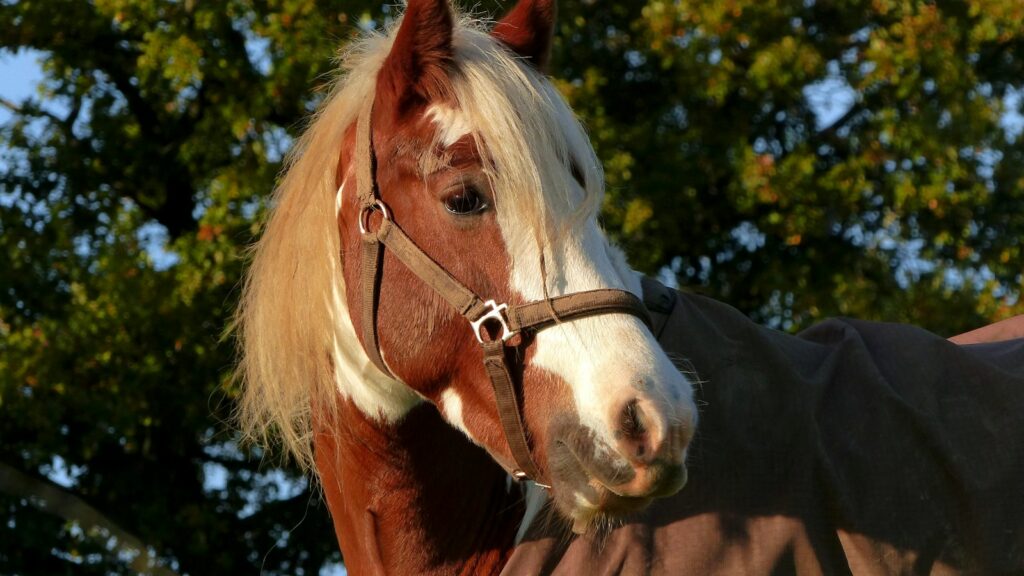
In the earliest days of Western films, actor William S. Hart and his pinto pony Fritz established many conventions that would define the genre. Hart, known for his gritty, realistic portrayals of Western life in silent films of the 1910s and 1920s, found his perfect equine partner in the small but spirited pinto. Unlike the larger, more imposing Western horses that came later, Fritz stood just 14.3 hands high (about 57 inches at the shoulder), but what he lacked in size he made up for in personality and intelligence. Fritz became known for his expressive face and seeming ability to convey emotions on screen, talents Hart frequently showcased in close-up shots rarely afforded to equine performers. The horse’s most famous trick was his ability to fall on command—a dangerous stunt that Fritz performed with remarkable precision. Hart’s deep affection for Fritz was evident in his autobiography, where he wrote that the pinto was “the greatest horse that ever lived” and maintained a special stable for the horse at his retirement ranch until Fritz’s death in 1938.
Dollor: John Wayne’s Favorite Mount
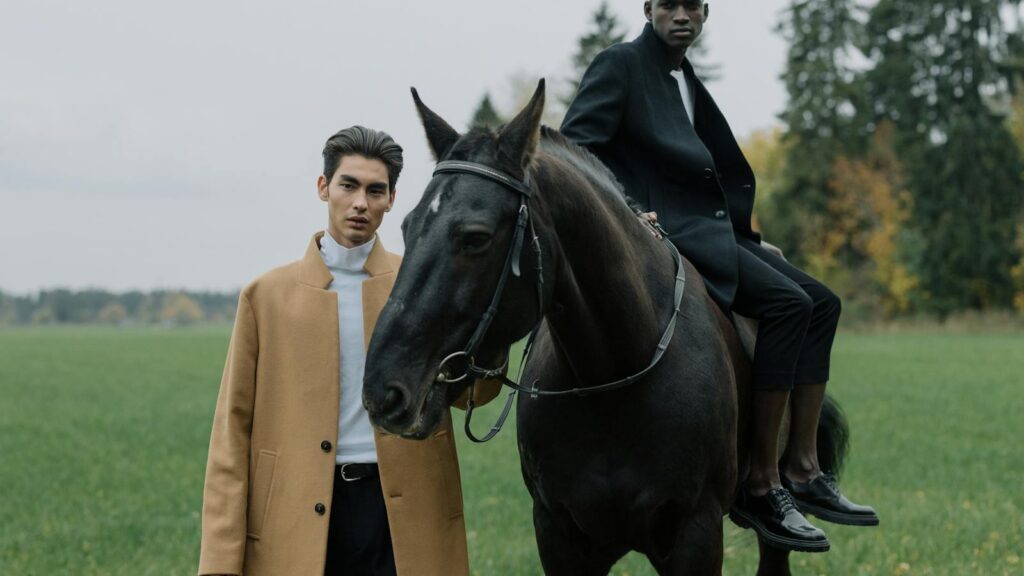
While John Wayne rode many horses during his extensive Western film career, he developed a particular affinity for a beautiful sorrel named Dollar (intentionally spelled with one “l”). Wayne rode Dollar in several of his later and most acclaimed films, including “True Grit,” “The Cowboys” and “Rooster Cogburn.” Unlike some Western stars who owned their horses, Wayne didn’t personally own Dollar, who belonged to Dick Webb Movie Productions and Fat Jones Stables, but he specifically requested this horse whenever possible. Standing 16 hands high, Dollar was larger than many equine performers, appropriately matching Wayne’s commanding physical presence on screen. Wayne’s deep appreciation for horses was evident in his careful riding style and the consideration he showed to Dollar during filming, often checking the ground conditions before riding scenes to ensure the horse’s safety. Though never achieving the household name status of Trigger or Silver, Dollar’s appearances in Wayne’s most iconic later films cemented his place in Western movie history.
Buck: The Versatile Mount from “Bonanza”
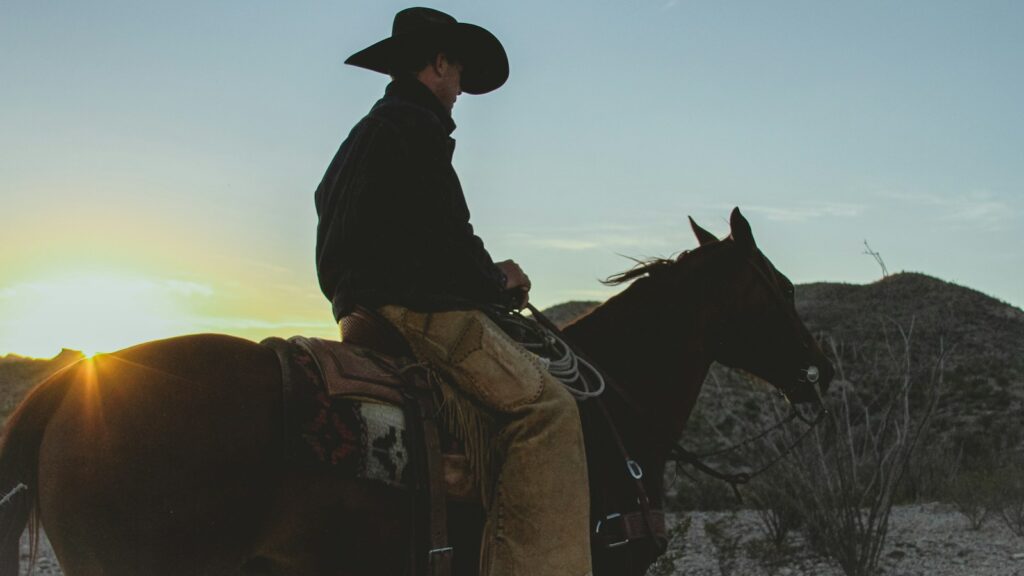
The long-running television series “Bonanza” featured several notable horses, but perhaps none more recognizable than Buck, the buckskin gelding ridden by family patriarch Ben Cartwright (Lorne Greene). Buck’s golden coat and black points created a striking visual presence throughout the show’s 14-season run from 1959 to 1973. The horse was known for his steady temperament and versatility in various filming situations, from galloping scenes across the Ponderosa to careful navigation of studio sets. Greene, initially not an experienced rider, developed a comfortable partnership with Buck over the years, with both actor and horse growing more confident in their scenes together. Behind the scenes, Buck was treated as an important cast member, with his own designated handler and specialized care throughout production. The image of Greene astride Buck became so iconic that it was featured in the show’s opening credits and promotional materials, making this horse-and-rider combination instantly recognizable to television audiences worldwide.
Cisco: The Cisco Kid’s Reliable Partner
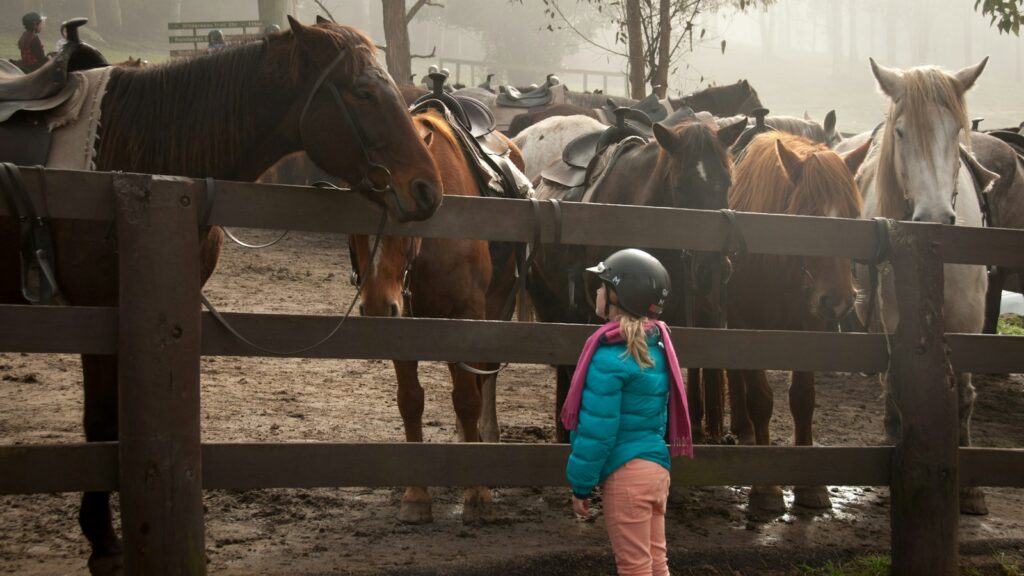
While Duncan Renaldo portrayed the charming Latino character “The Cisco Kid” in films and television during the 1940s and 1950s, his loyal mount Cisco provided consistent support through countless adventures. This beautiful chestnut horse with distinctive white facial markings complemented Diablo, the black horse ridden by Cisco’s sidekick Pancho (Leo Carrillo). The contrast between the two horses created a visually pleasing symmetry that became a signature element of the series. Cisco was noted for his calm demeanor during filming, particularly in scenes involving gunfire or other potentially startling elements. Unlike some movie horses trained to perform elaborate tricks, Cisco’s greatest asset was his reliability and steady temperament, making him ideal for the rigorous television production schedule. The horse performed in over 150 episodes of the “The Cisco Kid” television series, with viewers often noting the genuine affection between Renaldo and his equine co-star. Cisco’s contribution to the show’s success was such that when the series went into syndication, promotional materials frequently featured both the human and equine stars.
Phantom: The Wild Stallion of Western Films
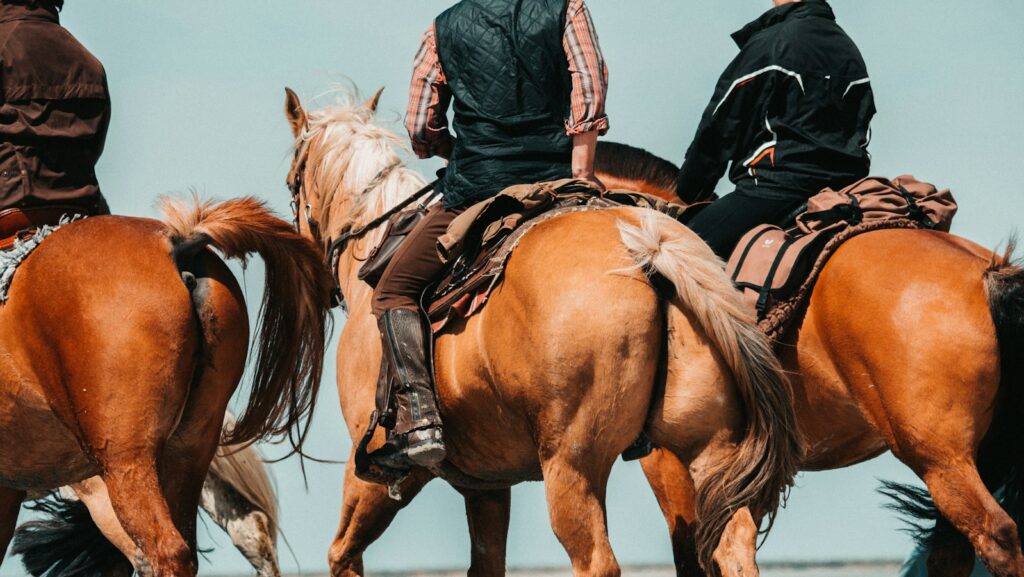
Not all iconic Western horses were faithful companions to cowboys—some represented the untamed spirit of the frontier itself. The concept of the wild stallion, often white or black for dramatic effect, appeared in numerous Western films as a symbol of freedom and the unconquerable nature of the West. Films like “The Misfits” (1961), “Running Free” (1969), and various “wild horse” Westerns featured these magnificent creatures as central characters rather than sidekicks. Professional horse trainer and actor Ben Johnson worked with several horses who portrayed these wild stallions, creating thrilling chase sequences and dramatic confrontations. These horses required specialized training to appear wild while performing precisely choreographed movements for the camera. The mythic wild stallion has become so embedded in Western film iconography that it influenced real-world conservation efforts for wild horses, connecting cinematic representation to environmental activism. These fictional wild horses often had backstories as magnificent as any human character, with legends of their speed, intelligence, and refusal to be captured forming central narrative elements in many Western films.
The Evolution of Equine Stars in Western Cinema
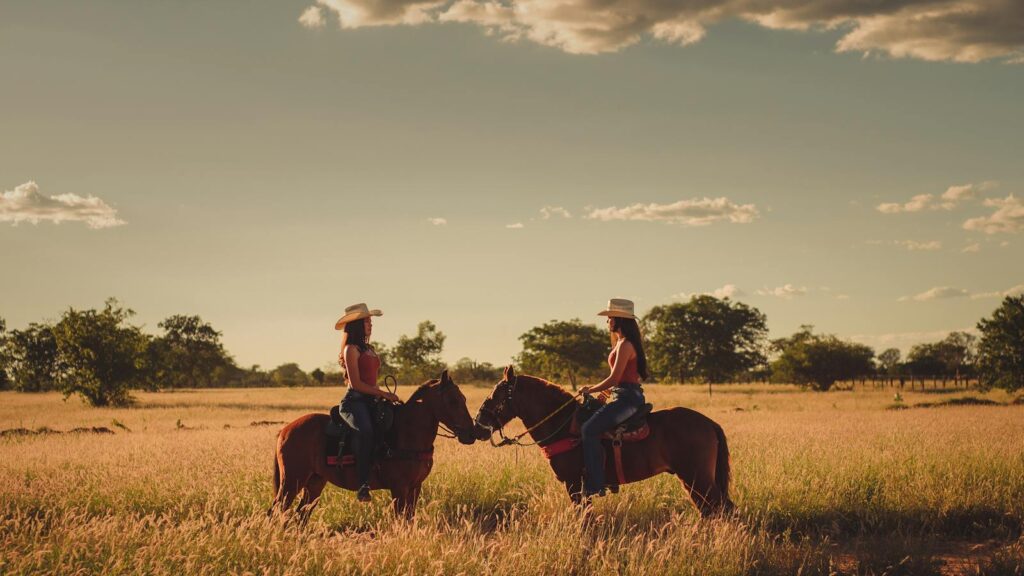
The portrayal of horses in Western films evolved significantly from the silent era through the genre’s golden age and beyond. Early Western horses performed basic riding scenes with minimal specialized training, but as the genre developed, equine performers became increasingly sophisticated. By the 1940s, horses like Trigger were performing complex tricks that required years of patient training and formed significant plot elements in their films. The relationship between Western actors and their horses also evolved, with early performers often viewing horses as necessary props while later stars like Rogers, Autry, and Wayne developed genuine connections with their equine partners. Training methods similarly progressed, moving from sometimes harsh techniques to more humane approaches based on positive reinforcement and understanding equine psychology. This evolution reflected changing societal attitudes toward animals and contributed to the increasing prominence of horses as characters with distinct personalities rather than mere transportation. The finest Western film horses didn’t just carry their riders but helped tell the story through their movements, expressions, and the authentic connection between horse and human that remains central to the Western genre’s enduring appeal.
Legendary Horses of Western Cinema
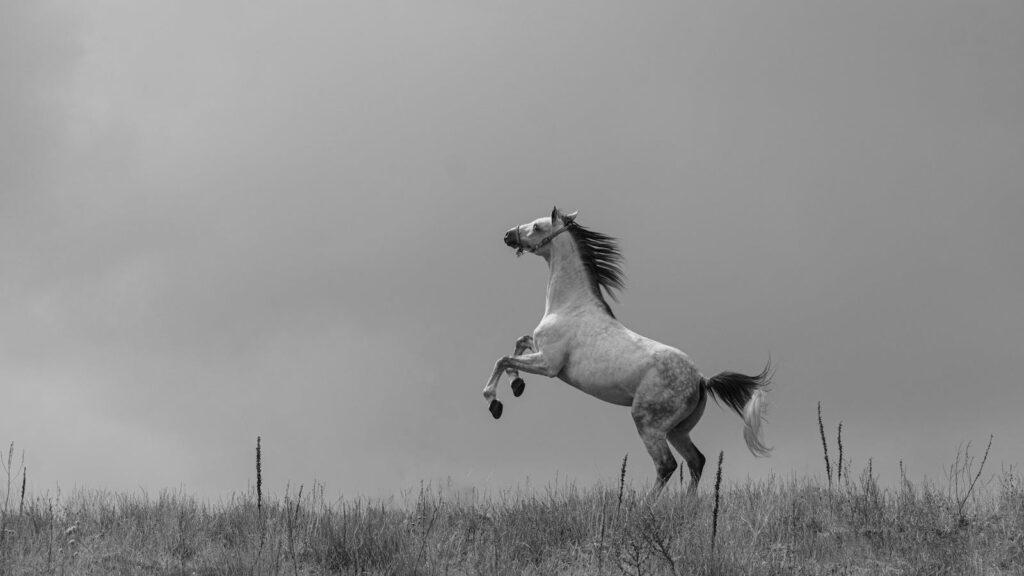
From the earliest days of cinema through the golden age of Westerns, these magnificent equine performers captured the hearts of audiences and helped define an iconic American film genre. More than simple props or modes of transportation, horses like Trigger, Silver, and Champion became genuine stars with fan clubs, merchandise, and devoted followings. They performed dangerous stunts, developed authentic bonds with their human co-stars, and embodied the spirit of freedom and adventure that defined the mythic American West. While the era of Western film dominance has passed, these horses remain cultural touchstones—symbols of a time when the relationship between humans and horses represented something fundamental about America’s understanding of itself. Their legacy continues not just in film history but in how we imagine the frontier spirit and the special partnership between people and horses that helped build a nation.

